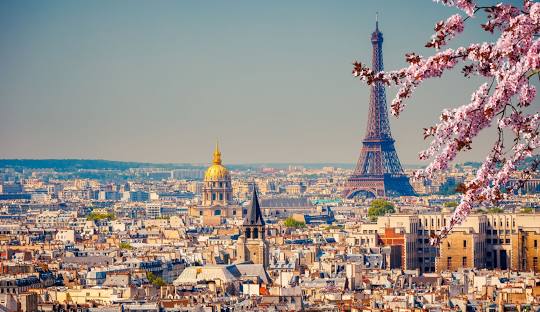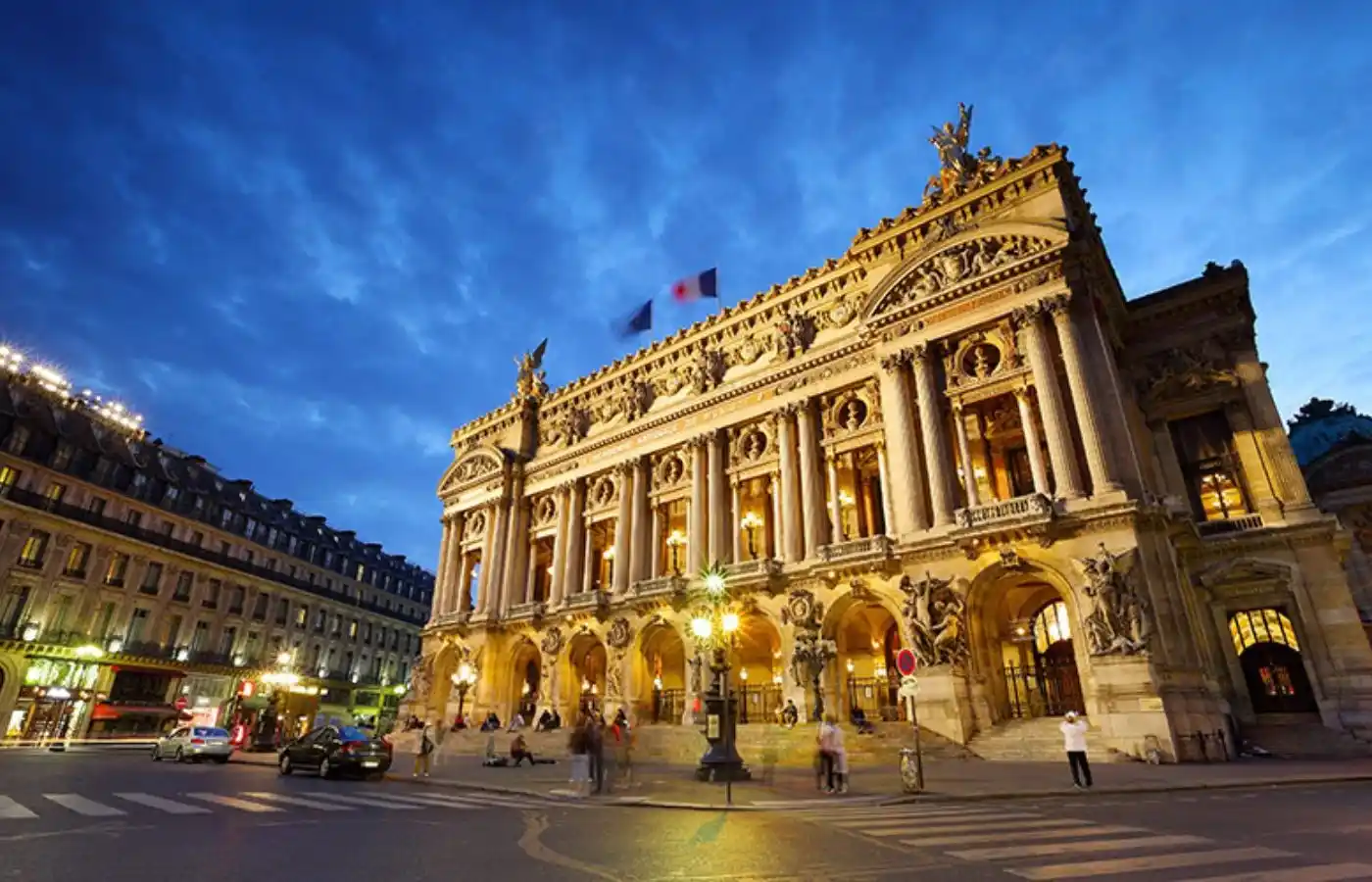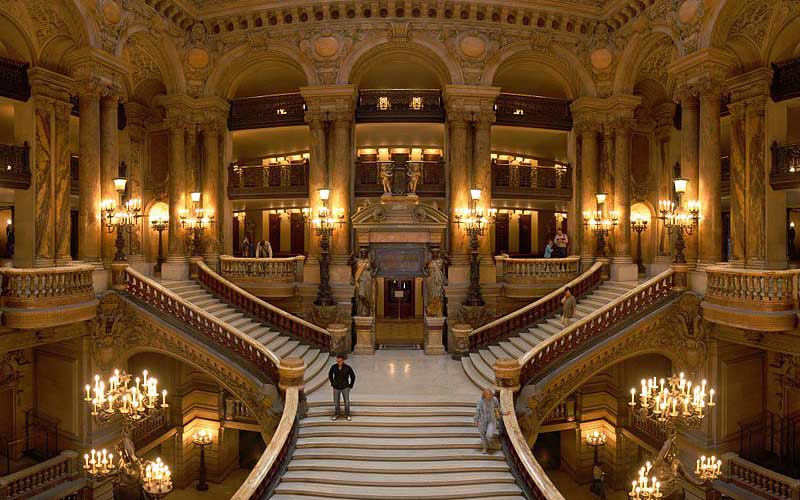A city that has been inspiring authors, painters, dancers and all creative hats for centuries, Paris is incredibly impressive.
Turning over the pages of its long-standing history, the legendary Opéra or Palais Garnier finds a reverend place in Paris. There is no better place to enjoy a classical opera than this elegant, magical and cultural destination! Palais Garnier is an ode to Paris architecture and a prestige symbol of the classical Opera milieu.
Let’s take a look at all the interesting facts and history, before you head to visit the famous Opera House in Paris, Palais Garnier.
About Paris Opera House
Image Credit: en.wikipedia.org
Opera soothes our soul, doesn’t it? Well, to catch the best Opera show in Paris, visit the Palais Garnier/ Opera Garnier. An epitome of Napoleon architecture, the Parisian version of Opera House is designed and engineered by Charles Garnier (who was an unknown 35-year-old architect from humble beginnings). Flaunting a 1979-seat auditorium and a flamboyant Beaux-Art architecture, this Paris Opera House looks resplendent dipped in gold. Dazzling with eclectic interior and sumptuous exterior, the place invites the biggest artists, ballerinas and hordes of crowds.
Right from the two giant statues covered in shimmering copper and the iconic marble staircase to frescoed (controversial) ceilings and ornamented courtyards, the design of the house deserves standing applause.
There is no space that is not accentuated with decorative elements and elaborate carvings using polychrome, iron, bronze, marble and porphyry. Even the 5-degree inclined stage is one-of-a–kind, leading the audience to enjoy a better view of the concert.
Created by Marc Chagall in 1962, its ceilings are emphasized with mural paintings. There is an array of gilded chandeliers throughout the premise that would keep your eyes popped.
You can imagine how fabulous the architecture is by the fact that it is the backdrop of the famous novel of 1910, Gaston Leroux’s Phantom of the Opera.
- Auditorium
The horseshoe-shaped auditorium is dotted with comfy seats submerged in a red hue and highlighted in gold. It’s a metallic structure camouflaged with marble, stucco, velvet and chandeliers. The curtain is overdone with tassels and braids. The slanted stage of the Palais Garnier’s theatre runs 52 meters wide and 62 meters high, making it the largest stage in Europe — large enough to hide the Arc De Triomphe. Hold your breath before we tell you that the stage can accommodate up to 450 artists at a time. Get ready for a head-turning spectacle.
- Grand Staircase
The mighty purpose of Opera House was to stun the world, with its large-scale architecture and jaw-dropping design. One of its extraordinary features is the Grand Staircase, made of white marble with railings of red and green marble. As you bend your head back and look upwards you will find awe-inspiring paintings, such as The Triumph of Apollo and The Enchantment of Music Deploying its Charms.
- Grand Foyer
The staircase would lead you to a long room called Grand Foyer which has beautiful decoration elements and an amazing view. It was initially built with the aim of entertainment for the VIPs and people from the high-society of Paris.
- Library-Museum
For someone who is a bibliophile, do take a visit to the Paris Opera House. It is home to a dynamic collection of books in its Library-Museum, harking back to the times of unprecedented theatre history. The museum boasts an eye-catching exhibition of paintings, drawings, photographs and set models.
- Chandelier
Garnier designed an ostentatious chandelier in the auditorium, which remained in controversy for some time. It was argued that the chandelier interrupted the visual appeal of the performance. No wonder, it’s huge as it is made of seven-ton bronze and crystal. The entire cost went off the roof, budgeting around 30,000 gold francs.
History of the Paris Opera House
Opéra National De Paris, the official opera and ballet company in Paris, was founded in 1669 by Louis XIV. Several buildings were made and dedicated to performing arts in these staggering 350 years.
Currently, there are two homes of the Paris National Opera: Opera Bastille (1989) and Palais Garnier (1875).
Standing for over 150 years now, the Palais Garnier was constructed under the Second Empire in France. After an assassination attempt on Napoleon III (the nephew of Napoleon Bonaparte) at the entrance of the old Opera House, a new opera house came into the picture. Napoleon III commissioned the construction. Tragically, he never got to watch a performance at the opera house (Palais Garnier) as he was exiled and ousted during the Franco-Prussia War. Construction was halted, and the unfinished building became a homage and hospital for the military.
The Paris Opera Garnier was earlier referred to as the Salle des Capucines as it is tucked in the 9th arrondissement of the city. Soon the name was overthrown and was taken by its architect, Charles Garnier. The design was chosen through a competition where Garnier won the best design award. He wonderfully mingled the Baroque, Neoclassical, Beaux-Arts, and Renaissance styles.
There is a lake under Palais Garnier; the story begins when the construction was constantly suspended because of the wet, swampy site. It was finally decided to build a concrete reservoir underneath the building.
After all the setbacks, the Opera House was completed in 15 years by 1875.
Employing the finest artists and materials for the construction, the Palais Garnier was an exorbitant affair.
Suggested Read: The Enchanting Eiffel Tower at Night – Paris Travel Guide
Shows in Paris Opera House
Opéra de Paris has been hosting umpteen operas, ballets, recitals, and concerts for years. Although most of the operas, ballet,s and other performances are conducted at the latest developed Opera Bastille, the Palais Garnier still brings in the classical ballets and concerts for the audience.
A few of the shows that you can catch this season in both these houses are:
- Elektra (Opera)
- Cendrillon (Opera)
- Midi Musical (Concerts & Recitals)
- Spectacle de l’École de Danse (Ballet)
- Ecole de Danse (Ballet)
- Alan Lucien Øyen (Ballet)
- La Cenerentola (Opera)
 Featured
Featured  Featured
Featured Why you must watch a Paris Opera Show?
Operas are rejuvenating, especially when you watch it in the monumental theatre of the Paris Opera House. From depicting the waning days of history to giving a twist to the classic Shakespeare tale to the portrayal of satirical dramas, the range of shows displayed at Opera Garnier and Opera Bastille is beyond your imagination. You will be transported to a world of peace and power. The live shows are thrilling and emotionally impactful. You might cry, laugh out loud, tap your toes or just watch in awe. The palatial sets, bright costumes, and strong performances keep you on the edge of your seat. These Paris opera shows bring freshness and relevance to the modern spectators.
How to Buy Tickets to Paris Opera House?
The best way to visit and explore Opera Garnier is to attend a performance. There are plenty of shows on a daily and weekly basis that you can add to your list. If you aren’t looking for opera concerts, you can book a guided or self-guided tour and take a 360-view of the sheer richness. It offers you a great possibility to discover the treasure of the 19th-century theatre and its detailed architecture.
Tip: Most of the performances are in the native language, maybe Italian or French. But, there are supertitles in English or French that will help you understand better. So, read about the details of the performance before booking or contact the tour operator.
You can also check Paris tour packages that include such experiences.
Other Interesting Facts about Paris Opera House
- It’s a huge building that measures a total length of 154.9 meters (508 feet) and a width of 101.2 meters (332 feet).
- About 14 painters and 73 sculptors worked on creating the most extravagant façade of the building. There were countless mosaic artists and other craftsmen who laboured day and night.
- With all these numbers, it was once the most expensive building, which led to a loan of 4.9 million gold francs, costing a total of 7 million francs.
- It was the first Opera House to use electricity.
- A salamander is made as it is believed to be a good luck charm protecting the house against fire.
Conclusion
Paris Opera House is an enchanting experience and will take you back to the iconic past of the city. You can indulge in the luxury and over-the-top elegance of the architecture with a wonderful tour inside.



Fantastic Blog! This is the type of post that needs to be given and not the accidental misinformation that’s at the other blogs. Appreciate your sharing.